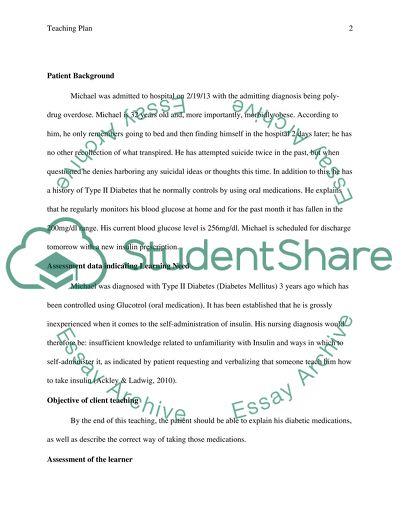Patient Teaching plan Research Paper Example | Topics and Well Written Essays - 1000 words. Retrieved from https://studentshare.org/nursing/1468558-teaching-plan
Patient Teaching Plan Research Paper Example | Topics and Well Written Essays - 1000 Words. https://studentshare.org/nursing/1468558-teaching-plan.


